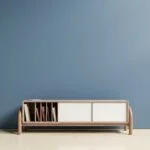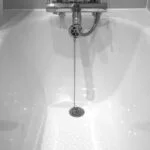Are you looking to give your home decor a new lease on life? Or perhaps you’re in search of unique, affordable pieces to add character to your living space? Look no further than the world of home decor reselling. In this introductory section, we will delve into this growing trend and highlight the benefits it brings for both sellers and buyers.
Reselling home decor items has become increasingly popular in recent years. Many people are discovering the joy of breathing new life into pre-loved pieces or finding that perfect item at a fraction of its original cost. Whether you’re passionate about interior design or simply seeking a budget-friendly way to update your home, reselling opens up a world of possibilities.
One of the major advantages of reselling is the opportunity to uncover hidden gems that are often unavailable or unaffordable through traditional retail channels. Additionally, selling your own home decor items allows you to recoup some of your investment while freeing up space for new pieces. It’s a win-win situation for both sellers and buyers alike.
In the following sections, we will guide you through the process of reselling your home decor step by step. From evaluating the market and preparing your items for resale to choosing the right platform and marketing your listings effectively, we’ve got you covered. By embracing these strategies and taking advantage of online platforms, you’ll be well on your way to successfully navigating the exciting adventure of reselling your home decor. Let’s dive in.
Evaluating the Market
When it comes to reselling your home decor, one of the most crucial steps is evaluating the market to determine the demand for your items. By understanding what buyers are currently looking for and what trends are popular, you can maximize your chances of a successful resale. Here are some tips on how to effectively evaluate the market for your home decor pieces:
- Research popular platforms and marketplaces: Before listing your items for resale, take the time to research popular online platforms and marketplaces where people buy and sell home decor. Platforms like Etsy, eBay, or Facebook Marketplace may have different target audiences and selling fees, so it’s important to choose the ones that align with your target market.
- Analyze current trends and styles: Stay up-to-date with current trends in home decor by browsing design magazines, following interior design influencers on social media, or visiting furniture stores. This will give you an idea of what styles are in demand and which ones may not be as popular at the moment.
- Assess potential value: To accurately price your home decor items, it’s essential to assess their potential value in the market. Factors such as brand reputation, condition, rarity, and age of the item can all influence its value. Search for similar listings or completed sales on various platforms to get an idea of how much similar items are selling for.
Once you have evaluated the market and determined the demand for your home decor pieces, you will be better equipped to set fair and competitive prices that attract potential buyers. Remember that pricing too high may deter buyers while pricing too low could result in undervaluing your pieces. Finding a balance between attracting buyers and maximizing profit is key.
Preparing Your Home Decor for Resale
When it comes to reselling your home decor items, taking the time to properly clean, restore, and stage them can greatly enhance their appeal to potential buyers. In this section, we will provide you with a step-by-step guide on how to prepare your home decor for resale.
- Thoroughly clean and restore: Before listing your items for sale, it is essential to give them a thorough cleaning. This includes dusting surfaces, washing fabrics if applicable, and removing any stains or odors. Consider using appropriate cleaning products based on the materials of your items. For example, wood furniture may require specific polishes or wax treatments.
- Stage your items: Staging your home decor items can help potential buyers envision how they would look in their own homes. Begin by decluttering the space around the item and arranging it in an appealing manner. Pay attention to creating visually pleasing compositions by considering factors such as height variations and color combinations.
- Capture attractive images: High-quality images are crucial for attracting buyers online. Invest some time in improving your photography skills or consider hiring a professional photographer to capture stunning images of your home decor pieces. Ensure that the lighting is optimal and showcase different angles of each item.
By following these steps and investing effort into preparing your home decor for resale, you significantly increase the chances of attracting interested buyers who will be willing to pay fair prices for your items.
Table
| Step | Description |
|---|---|
| 1 | Thoroughly clean and restore |
| 2 | Stage your items |
| 3 | Capture attractive images |
Pricing Strategies
Setting the right price for your home decor items is crucial in the resale market. It can attract potential buyers while ensuring that you maximize your profit. In this section, we will explore different pricing strategies and provide tips on how to set fair and competitive prices for your home decor.
One effective way to determine the value of your home decor items is by comparing similar listings in the market. Researching similar products can give you an insight into what other sellers are offering and at what price. Take note of any unique or distinguishing features of your item that may warrant a higher value.
It’s also important to consider market trends when determining the price of your home decor pieces. Keep an eye on current styles and popular designs in home decor. Items that are in high demand can often be priced higher, while those that are less popular may need to be priced more competitively to attract buyers.
Flexibility and negotiation are key aspects of the resale market. Some buyers may be willing to negotiate the price, so it’s important to be open to offers within reason. Consider setting a slightly higher initial asking price to leave room for negotiation while still ensuring that you get a fair price for your item.
Remember, setting a fair and competitive price is not only advantageous for attracting buyers but also building positive relationships within the resale community. By offering reasonable prices, you increase your chances of repeat customers and positive reviews, which can ultimately benefit your reselling business in the long run.
By carefully evaluating the market, researching current trends, and considering negotiation factors, you can confidently set fair and competitive prices for your home decor items. Remember to regularly reassess and adjust prices based on market feedback to stay competitive in the ever-changing world of home decor reselling.
Choosing the Right Platform
With the increasing popularity of reselling home decor items, it is essential to choose the right platform to reach potential buyers effectively. There are various online marketplaces available, each with their own pros and cons. By understanding the different options available, you can find the best platform that suits your needs and increases your chances of success.
One popular online marketplace for reselling home decor is Etsy. Etsy focuses on handmade, vintage, and unique items, making it an ideal platform for selling one-of-a-kind or customized home decor pieces. The site has a large and dedicated customer base who appreciate the craftsmanship and individuality of these items.
To create effective listings on Etsy, be sure to include high-quality photographs that showcase the unique features of your home decor pieces. Additionally, write detailed descriptions that highlight any special qualities or techniques used in creating the item.
Another widely used platform for reselling home decor is eBay. eBay offers a vast range of products, including both new and used items. As a result, this platform attracts a large audience of buyers looking for various types of home decor.
When creating listings on eBay, research similar listings to set competitive prices that attract potential buyers while ensuring you still maximize your profit. Make use of eBay’s seller tools such as promoted listings to increase visibility and improve your chances of making successful sales.
If you specialize in more high-end or designer home decor items, considering using platforms such as Chairish or 1stdibs can be beneficial. These platforms focus on luxury furniture and art pieces and attract buyers interested in unique and upscale home decor selections. When listing items on these platforms, take advantage of their enhanced visual displays by using high-quality images from multiple angles to showcase the intricate details and craftsmanship.
It is important to thoroughly research each platform before deciding which one(s) to utilize for reselling your home decor items. Consider factors such as fees or commissions charged by the platform, ease of use, target audience, and the support and resources provided for sellers. By choosing the right platform(s), you can effectively reach your target market and increase your chances of finding interested buyers for your home decor pieces.
Marketing and Promoting Your Listings
Once you have prepared your home decor items for resale and set fair prices, the next step is to effectively market and promote your listings in order to attract potential buyers. By implementing strategic marketing strategies, you can significantly increase the visibility of your items and enhance their appeal to potential customers.
Below are several tips on how to effectively market and promote your listings for resale home decor:
- Utilize social media platforms: Social media platforms such as Instagram, Facebook, and Pinterest can be powerful tools for reaching a large audience of potential buyers. Create visually appealing posts featuring high-quality images of your home decor items, along with engaging captions that highlight their unique features. Make sure to utilize relevant hashtags in order to maximize exposure and attract users who are interested in home decor.
- Write compelling product descriptions: When creating the product descriptions for your listings, focus on highlighting the key features, materials, and condition of the items. Use descriptive language that appeals to potential buyers’ senses and encourages them to envision how the item could enhance their own space. Be honest and transparent about any flaws or imperfections, as this fosters trust between you as the seller and potential buyers.
- Capture high-quality images: The quality of your listing’s images can greatly influence a buyer’s decision-making process. Invest time in improving your photography skills or consider hiring a professional photographer to capture stunning images of your home decor items. Ensure that each item is well-lit, properly staged, and photograph them from multiple angles so that potential buyers can get a clear sense of what they are purchasing.
- Leverage customer reviews: Request feedback from previous customers who have purchased items from you before or from friends/family who have seen or used your products in their homes. Positive customer reviews build trust with potential buyers by showcasing positive experiences others have had with your items.
By implementing these marketing strategies, you can greatly increase the visibility of your resale home decor items and attract more potential buyers. Remember to stay active and engaged with your audience by promptly responding to messages and inquiries, as this can further enhance trust and engagement.
Handling Sales Transactions
Clear Communication and Prompt Responses
One of the essential aspects of a smooth sales transaction in the resale home decor market is clear communication between the seller and the buyer. As a seller, it is important to respond promptly to any inquiries from potential buyers. This not only shows professionalism but also helps build trust and credibility with prospective customers. Make sure to check your messages regularly and provide detailed and courteous responses to all questions or concerns raised by buyers.
Negotiating with Potential Buyers
Negotiation skills play a crucial role in ensuring a successful resale process for both buyers and sellers. It is important to approach negotiations with an open mind and flexibility. When negotiating with potential buyers, consider their offers seriously while also keeping your desired price or profit in mind.
Look for common ground where both parties can benefit, and be prepared to make concessions if necessary. Remember that negotiation is often a give-and-take process, so maintaining a positive attitude and being willing to find mutually agreeable terms can go a long way.
Packaging and Shipping Safely
Once you have reached an agreement with the buyer, it is essential to package and ship the home decor items securely to ensure customer satisfaction. Use appropriate packaging materials that will protect the items during transit, such as bubble wrap or foam padding. Double-check the address provided by the buyer before shipping to avoid any delivery issues. Additionally, consider purchasing insurance for valuable or fragile items to protect yourself from any potential damage or loss during shipping.
Handling sales transactions professionally not only enhances your reputation as a seller but also contributes to positive experiences for buyers. By prioritizing clear communication, effective negotiation, and safe shipping practices, you can ensure that both you as the seller and your customers have a smooth resale process from start to finish.
Dealing with Challenges
Addressing Low Offers
One of the challenges that resellers may encounter in the home decor market is receiving low offers for their items. It can be disheartening when a potential buyer undervalues your piece, especially if you have put time and effort into cleaning, restoring, and staging it. However, it’s important to remember that negotiating is a common part of the resale process.
When faced with a low offer, take a professional and positive approach. Instead of immediately dismissing the offer, consider counteracting with a reasonable yet firm price. This shows that you are open to negotiation while also valuing your item appropriately.
It’s also helpful to understand the current market value of similar pieces. Research comparable listings and recent sale prices to determine if your asking price aligns with market trends. By being informed about the value of your item, you can confidently explain your pricing decisions to potential buyers and stand firm on your asking price when necessary.
Handling Difficult Buyers
Another challenge that may arise in the resale home decor market is dealing with difficult buyers. Some buyers may be demanding or try to negotiate below your asking price without valid reasoning. In these situations, it’s essential to maintain professionalism and patience.
Firstly, ensure clear communication from the beginning by providing detailed information about the item in your listing description. Include accurate measurements, condition details, and any flaws or imperfections. Transparency upfront can help avoid misunderstandings later on.
If a buyer becomes difficult during negotiations or tries to make unreasonable requests after purchasing an item (e.g., requesting a refund due to minor flaws), stay calm and address their concerns politely but firmly. Offer options for resolution within reason while maintaining fair boundaries as a seller.
Remember that not every buyer will be difficult, so don’t let challenging experiences deter you from continuing with your resale journey. Most buyers are genuinely interested in finding unique home decor items, and with persistence, you will find those who appreciate the value of your pieces.
Managing Returns
Handling returns is another potential obstacle that resellers may face. Despite thorough descriptions and clear photos, occasionally a buyer may still be unsatisfied with their purchase. It’s important to establish return policies that are fair to both parties and protect your interests as a seller.
When creating your return policy, clearly state the conditions under which returns are accepted and provide instructions for initiating a return. This helps manage buyer expectations from the start.
If a buyer requests a return, respond promptly and professionally. Assess the situation objectively, keeping in mind whether the return reason is valid (such as receiving an item significantly different from its description) or if it’s due to buyer’s remorse or change of mind.
For valid return requests, cooperate with the buyer to arrange for item retrieval or shipping labels. Once the item has been returned and inspected, issue the refund promptly while following your designated procedures.
Managing returns effectively can help maintain customer satisfaction and build trust among potential buyers. Even though returns may require time and effort on your part, providing excellent customer service can lead to positive reviews and repeat customers in the long run.
Conclusion
In conclusion, reselling your home decor items can be a rewarding adventure. Throughout this article, we have explored the world of home decor reselling, evaluated the market to determine the demand for your items, discussed how to prepare and stage your decor for resale, shared pricing strategies, highlighted the best online platforms for reselling, discussed effective marketing techniques, offered guidance on handling sales transactions, and addressed common challenges in the resale market.
By following these steps and utilizing the tips provided, you can confidently embark on your resale journey. Reselling not only allows you to declutter your space and make some extra money, but it also provides an opportunity for creativity and self-expression. The thrill of finding unique pieces and connecting with buyers who appreciate your style is truly rewarding.
Remember to stay flexible and open to negotiation throughout the process. By setting fair prices and being responsive to buyer inquiries, you can build positive relationships with potential customers. Additionally, maintaining clear communication and ensuring secure payment transactions will help create a smooth resale process for both parties involved.
To inspire you further on your resale journey, we encourage you to seek out success stories or testimonials from other resellers. Hearing about their experiences and achievements can provide valuable insight and motivation as you navigate the world of home decor reselling.
So embrace the adventure of reselling your home decor. Put your creativity to work, make connections within the reselling community, and enjoy the process of curating a collection that reflects both your personal style and the desires of potential buyers. With confidence and determination, you can turn a hobby into a profit-making venture while sharing beautiful home decor with others. Happy reselling.
Frequently Asked Questions
How to start selling home decor items?
To start selling home decor items, there are several steps you can follow. First, conduct thorough market research to understand the demand and identify your target customers. Next, create a business plan outlining your goals, strategies, and financial projections. It is crucial to carefully select your products by considering current trends and customer preferences.
Research suppliers or manufacturers that offer high-quality products at competitive prices. Once you have selected your inventory, set up an online store or physical retail space to showcase and sell your home decor items. Implement effective marketing strategies such as social media promotion, influencer collaborations, and SEO optimization to reach potential customers. Lastly, provide exceptional customer service to build a loyal customer base and encourage repeat purchases.
What home decor items sell most?
The home decor industry offers a wide array of products that sell well based on consumer preferences and trends. While the popularity of specific items may vary over time, certain categories consistently perform well in the market. Furniture pieces like sofas, coffee tables, and accent chairs are in high demand as they contribute significantly to the aesthetics and functionality of a space.
Additionally, decorative accessories such as artwork, mirrors, vases, and pillows can instantly enhance the overall ambiance of a room. Home fragrance products like candles or diffusers also have a strong market presence due to their ability to create calming atmospheres or add pleasant scents to homes. Ultimately, understanding customer preferences in your target market is key to determining which home decor items will sell most in your specific business.
How profitable is home decor business?
The profitability of a home decor business can vary depending on several factors including market conditions, competition levels, pricing strategies, operating costs, and customer demand. A successful home decor venture has the potential for significant profitability if managed effectively. By carefully selecting high-quality yet cost-effective products from suppliers or manufacturers with favorable terms, businesses can optimize profit margins whilst offering attractive prices to customers.
Effective marketing efforts that raise awareness about offerings can help drive sales growth and increase profitability. However, it is important to also consider the challenges associated with running a home decor business, such as inventory management and maintaining competitive pricing amidst market fluctuations. Overall, diligent planning, innovative strategies, and an adaptable approach are essential for maximizing profits in the home decor industry.

I’m thrilled to be your companion on this exciting journey through the world of home decor and design. With a passion for turning houses into homes and a keen eye for the finer details, I’m here to help you transform your living spaces into beautiful, functional, and meaningful havens.





